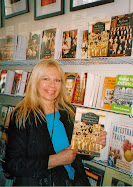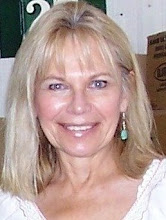Polish Worcester
I grew up in a culture that was uprooted from rural villages in partitioned Poland, packed into trunks, carried across the Atlantic in steerage, and re-created in the three-decker-lined streets of Worcester, Massachusetts. An industrial city, the second largest in New England, Worcester in 1920 was home to about 180,000 people, 72 percent of them either foreign-born or the children of foreigners. People of nearly 30 nationalities became U.S. citizens in Worcester in the early 1940s. Through the 1960s at least, the dominant ethnic groups—the Irish, Swedes, French Canadian, Italians, Poles, Lithuanians, Jews, Armenians, and Greeks—all laid claim to their own fairly clearly demarcated neighborhoods, typically centered around churches and synagogues. To me, this multicultural city was a magical place, rich in exotic foods, traditions, and languages. I felt like I was growing up in Europe.
Close enough. I grew up in a bilingual household, all of us speaking Polish with my babcia (grandmother), who shared our home. My parents were the first members of their respective families to own property in America. In 1941, they bought a small home on Pakachoag Hill in Quinsigamond Village, a Swedish neighborhood (though in point of fact, 5 of the original 14 households on our street were Polish American) at the southern end of the city near Auburn and Millbury. The Polish neighborhood was a two-mile car or bus ride north. Its heart was Millbury Street and its soul, Our Lady of Czestochowa Parish, aka St. Mary's. Millbury Street was the hub of social, retail, and business life for the thousands of Poles and Polish Americans who lived in its two neighborhoods, The Island and Vernon Hill. My family has belonged to Our Lady of Czestochowa Parish and its various organizations for nearly a century. Several generations of us have graduated from St. Mary's Elementary and High Schools; we're proud to have been educated by the Sisters of the Holy Family of Nazareth at New England's only co-ed Polish secondary school.
I am descended from two apparently unrelated Prokopowicz clans. Hopefully, DNA someday will establish whether any blood ties link these two families, who for hundreds of years lived within 35 miles of each other in the Lida district of the kresy (Poland's eastern borderlands), then independently crossed an ocean to settle within 5 blocks of each other in Worcester. If they are related, I may be my own cousin. (This I hope would prompt a call from Oprah.)
While my father's and mother's Prokopowicz families shared the same surname, the circumstances of their lives bore little similarity to each other.
My Maternal Prokopowicz Family
My maternal grandparents, Aleksandr Prokopowicz and Stefania Ruscik, both born ca. 1880, were from small farming villages near Szczuczyn, about 35 miles east of Grodno and southwest of Wilno. They entered an arranged marriage at ages 20 and 16 or so, respectively. By all accounts (including that of my grandmother herself, who told me she had been in love with the village schoolteacher), they had an incompatible, unhappy marriage. Their first child was born ca. 1899. A daughter and son followed. In 1910/11, Aleksandr and his older brother, Jozef, sold the family farm to their two younger sisters and used the money for ship's passage to America. After brief stints in Maynard and New Braintree, Massachusetts, the brothers took factory jobs in Worcester. Their wives and children followed in 1913. More children were born here. My mother, baptized Josefa (but known as Josephine), was the youngest of five siblings. All were educated at the Polish parish school. Alek and Stefania worked steadily in Worcester's industries and resided in the same Meade Street three-decker for about 25 years. They never became American citizens. When Alek died unexpectedly in 1939, he was buried in his brother's family plot in a tree-shaded older section of Notre Dame Cemetery in Worcester. Stefania never remarried, and never wavered from her desire to be laid to rest in a single grave of her own there; her instructions were followed when she died in 1962.
My Paternal Prokopowicz Family
My paternal grandparents, Julian Prokopowicz and Anna Blaszko, both born ca. 1895, were from small farming villages a few miles outside Radun, which in turn is 18 miles northwest of Lida and approximately 40 miles south of Wilno (today Vilnius, Lithuania). It is likely that Julian and Anna knew each other, since they grew up in the same parish. Both were single when they left their parents and siblings behind and immigrated in 1913/14. Julian's destination was Worcester, where he reconnected with the Linga family of Kiwance; Anna's was Lowell, where her Kulikowski cousins had settled. Julian and Anna were married in Lowell in 1916 and established in Worcester before their first child's birth a year later. My father, Alphonse, was the oldest of their nine children; he was 18 when his youngest sister was born in 1935. Julian, his name Americanized to Julius, was a wire drawer at American Steel & Wire South Works for his entire adult life. The family's first home was on Millbury Street, within easy walking distance of the wire mill. They moved three more times over the years, but always stayed on Millbury Street, by 1940 settling into the first floor of a three-decker near Crompton Park. The children attended Millbury Street School and Boys' and Girls' Trade and Commerce High Schools. Julius and Anna became U.S. citizens in the early 1940s. Julius died suddenly in 1951, and Anna remarried within months. She died in 1976. Julius, Anna, and some of their descendants are buried in a family plot at Notre Dame Cemetery.
Relationships, Memories, & the Lack Thereof
My babcia Stefania (also known as Stella) was the only grandparent I was close to. Aleksandr died before I was born, and Julius when I was 4 years old. Though I probably passed Anna's home nearly every day of my life, I never knew her. Perhaps it is not unusual that relationships sometimes get skewed in favor of one side of a family. Whatever the reasons, it is painfully sad. Stefania, a force of nature by any standards, played a major role in my life. I knew Alek and Julius only second-hand, from older family members' stories, and Anna only from occasional phone calls in which I never knew what to say. I have no photos of Stefania before she was in her 50s, and only one of Alek, taken in his coffin. I am grateful to have several photos of Julius and Anna, including their wedding photo, which I treasure.
As a child, I spent a great deal of time with my babcia Stefania. I begged her to tell me stories about her life, especially the farm where she grew up. In retrospect, of course, I wish I had asked more about wedding and baptismal dates and village names and siblings and ancestors, and less about gardens and animals. I did ask better questions as a teenager: Why didn't she wear a wedding ring? Why didn't she ever learn English? I deeply regret never having forged a relationship with Anna. Unlike Stefania, who was given to tearing up photographs and documents, Anna valued hers: the trunk she carried from Poland and an old suitcase held an abundance of photos, greeting cards, letters, notebooks, and other memorabilia. I could have learned so much from her. I could have been as close to Grandma as I was to Babcia.
And so my curiosity about my family's past was fed by the stories Stefania told me, and the stories I never had a chance to hear from Alek and Julius, and the stories I failed to seek from Anna. I was fortunate to have grown up in the midst of a huge extended family (my astrological birth chart has Jupiter in the fourth house—essentially, an abundance of family and blessings related to family; that really resonates with me). My dozens of aunts and uncles and cousins shared many memories and details that augmented what I learned from my parents. A maternal cousin, A. John Prokopowicz, began working on our shared roots in the early 1980s; he became my mentor in genealogy in 1997, encouraging me to research my paternal family lines. Since his death only too soon thereafter, I have often felt his spirit guiding and encouraging me in this quest.
Thanks to LDS microfilms, the resources of countless archives and libraries, helpful listserv "gen-pals," and serendipity, I have traced Alek and Stefania's families to the 1700s and Anna's to the early 1800s. I have visited my ancestral villages, which today lie within the borders of western Belarus, and met long-lost cousins who live there still. But I remain challenged by two major goals: to trace Julian's family roots (his father's family does not appear in the Radun parish records), and to find a photograph of Aleksandr actually taken during his lifetime. The search continues.










Hello there my name is Troy Nelson, Ive been reading up on your blogs hopping to find out about my family. My mom Stephanie is your cousin and that was not established until she asked whose blog it was, I had no idea. I love history and ill continue to read up.
ReplyDeleteHi Troy! I'm guessing we must have been introduced at Pat's birthday celebration a couple years back. It's wonderful to hear from you and know that you're interested in our shared family. If it ever gets confusing reading about two different Prokopowicz families here, you can always remember that your mom was named after your great-grandmother Stefania. Please give my best to your mom and the rest of the family there!
ReplyDelete